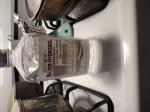Colloidal Silver Hydrosol and Suppression of Immune Responses
By Fred Peschel
Reprinted with permission
COLLOIDAL SILVER
an ANTIINFLAMMATORY and IMMUNOSUPPRESSIVE AGENT?
It appears that few have recognized an important mode of action of Colloidal Silver and possible its major benefit:
Supression of Immune Responses!
Colloidal Silver has for decades been classed as an antibacterial, antifungal and antivirual agent. The popular theory is that its taking of an electron (the positively charged ionic form is missing an electron) from the surface of the pathogen either ruptures it or inhibits its ability to use oxygen. (The later is of course valid only for an aerobic bacteria!)
The truly amazing results it has given with many conditions often go's beyond antibiotic actions! The basis of colloidal silvers immunosupressive and antiinflammatory action appears sound, based both on its excellent effeciency on skin burns (severe physical tissue damage) and on poison ivy, oak and sumac (immune system induced tissue damage)! There are also numberous references on the web of its effeciency against fire ants,bee stings, spider bites and the autoimmune diseases like AIDS and MS.
I have often mentioned my personal amazement in its ability to suppress both pain and blistering responses when I have burned my skin with a 350+ degree soldering iron. A burn, causing both smoke and the smell of burning flesh, becomes trivial if I apply Colloidal Silver within a minute! Clearly, its absorption gives a signal to the immune system, to supress the normal protective actions of producing pain and an insulating blister! As would be expected, there is skin damage, but it is limited to a white dry spot, where the skin oils and some tissue were literally vaporized.
In a diverse mode of tissue damage, from the immune systems reaction to poison ivy and sumac, I have had users state that even day old sumac poisoning, with its oozing sores, cleared in a day vs. the norm of weeks! Further, week old poison ivy itching was supressed quickly with a colloidal silver spray. Again, the immune systems action was supressed! The urushiol (absorbed irritating oil) clearly not being effected, but by the immune systems reaction being turned off!
Read the following description of the "Exaggerated Immune Response to Poison Ivy", so you better understand the immune systems complex response and often collaterally induced tissue damage.
Extracting from the Univ. of Mass immunology website:
"Poison Ivy: an Exaggerated Immune Response to Nothing Much"
"The first symptom of poisoning is a severe itching of the skin. Later, a red inflammation and a blistering of the skin occurs. In severe cases, oozing sores develop. The rash spreads by the poisonous sap, not as the result of contamination from sores. Unfortunately, your skin absorbs the active compounds in the sap within the first 3 minutes, and you cannot prevent the dermatitis without medical treatment. Soap and water are superior to water alone in removing the sap, but they also temporarily remove a natural protective layer that helps keep the active compounds from being absorbed through the skin.
Poison ivy (oak and sumac)leaves contain a sap with a mixture of chemicals called urushiol. When people get urushiol on their skin, it causes an allergic contact dermatitis. This is a T cell-mediated immune response, also called delayed hypersensitivity, in which the body's immune system recognizes as foreign, and attacks, the complex of urushiol-derivatives with skin proteins. The irony is that urushiol, in the absence of the immune attack, would be harmless. The most common treatment for severe contact dermatitis is with corticosteroids, which diminish the immune attack and resulting inflammation. (Ed: they should try Colloidal Silver!)
Details on topics referred to in the above overview.
Allergic Contact Dermatitis
Allergy is an altered or unwanted immune response. The immune system attacks something which is genuinely foreign, but which would be harmless, were it not for the immune attack. The immune system has evolved to neutralize and eliminate foreign substances from our bodies. However, it cannot tell whether the foreign substance is harmful, so it sometimes attacks harmless substances vigorously, causing an inflammation which can be far more harmful than the foreign substance alone. Hay fever allergic rhinitis or asthma to plant pollens) is a good example.
Dermatitis is an inflammation of the skin. If the allergy which causes the dermatitis is a response to something which came into contact with the skin, it is called allergic contact dermatitis. In addition to poison ivy, other things which contact the skin such as clothing, shampoo, jewelry, make-up, and deodorants can also cause allergic contact dermatitis. Allergic dermatitis can also be caused from within, as when a skin rash develops because of something we ate.
Corticosteroids
Cortosteroids are natural hormones in the body. They are immunosuppressive and antiinflammatory. They work by affecting gene expression in a complex manner, and the ways they reduce immune inflammation are not fully understood. They reduce the production of inflammatory cytokines and arachadonic acid and its derivatives (prostaglandins, prostacyclin, thromboxanes, and leukotrienes). The major natural antiinflammatory corticosteroid in the body is hydrocortisone (also called cortisol). Longer-lasting and more potent synthetic analogs of hydrocortisone are often used in the clinic, such as prednisolone, prednisone, or dexamethasone.
Delayed Hypersensitivity
Allergic inflammations, also called hypersensitivities, are caused by three underlying mechanisms. The one which is responsible for the reaction to poison ivy is called delayed hypersensitivity.
Delayed hypersensitivity does not start to be noticeable until several hours to a full day after exposure to the antigen. It may last for over a week. T lymphocytes recognize the foreign substances, usually after the antigen is eaten, degraded, and presented (in pieces) by so-called antigen-presenting cells such as Langerhans cells in the skin, or macrophages. Urushiol metabolites are presented by this and other mechanisms. The T lymphocytes pour out inflammatory signal substances called cytokines. These call in armies of white blood cells called monocytes, which become macrophages. The macrophages become activated by the cytokines and attack everything in the vicinity, and can cause severe tissue damage. In addition to poision ivy, a good example is the skin reaction to injected tuberculosis antigen. In fact, when tuberculosis bacteria infect the lung, it is the delayed hypersensitivity against them which destroys the lung. Although delayed hypersensitivity is responsible for the reaction to poison ivy, here, for comparison, is a brief introduction to the other two mechansims of hypersensitivity. Immediate hypersensitivity occurs within minutes of exposure to the foreign substance, also called the antigen. Hay fever or allergic rhinitis is an example. Some people also have immediate hypersensitivity to bee stings, and this can be life threatening if not treated immediately. Immediate hypersensitivity occurs when the body produces a special kind of antibodies, called immunoglobulin E (IgE), to the antigen. Mast cells and basophils bind the IgE on their surfaces. When antigen binds to (and cross-links) the IgE, these cells pour out vasoactive amines, such as histamine. It is these vasoactive amines which cause the inflammation. Antihistamines are usually an effective treatment for localized reactions.
Complement-dependent hypersensitivity occurs within an hour or so of exposure to antigen (more slowly than immediate hypersensitivity, but faster than delayed hypersensitivity). It usually starts when the most common kind of antibody, immunoglobulin G (IgG), reacts with the antigen. This triggers a complement reaction. (Complement is a series of blood proteins which aid in defense against microorganisms.) This in turn brings in white blood cells (especially neutrophils) which attack everything, and can cause severe tissue damage. An example of this kind of reaction is serum sickness, which occurs after a foreign antiserum or other protein is injected. Other examples are a reaction to a large injection of penicillin (penicillin depot) or to inhaling plant dusts over a long period of time ("Farmer's lung"). Complement-dependent inflammations require a relatively large amount of antigen (milligrams). In contrast, immediate and delayed responses can be severe even with tiny amounts of antigen (micrograms).
Urushiol
Urushiol is a mixture of catchol derivatives. The major catechol on poison ivy leaves is pentadecylcatechol. If urushiol is washed off the skin within an hour or so, the reaction can be largely prevented. However, if left on the skin, some diffuses through the skin, where it is metabolized to quinone derivatives. These form covalent complexes with skin proteins such as keratin. These complexes appear foreign to the immune system, which therefore attacks them.
Further information on poison ivy.
See Case studies in immunology - a clinical companion by Fred S. Rosen and Raif S. Geha, Garland Publishing Inc., 1996 (Case 6, contact hypersensitivity). Further information on allergy and hypersensitivity, and the underlying mechanisms, can be found in any textbook of immunology. For a discussion of corticosteroids, see a physiology book, such as the current edition of the Review of Medical Physiology by William F. Ganong, Appleton and Lange.
Godfrey, H. P., H. Baer, and R. C. Watkins. 1971. Delayed hypersensitivity to catechols. V. Absorption and distribution of substances related to poison ivy extracts and their relation to the induction of sensitization and tolerance. J. Immunol. 106(1):91-102.
Here are some relevant web sites:
Poison ivy, sumac, and oak by the American Academy of Dermatology. Includes what to do and common myths.
Contact dermatitis home page by A. P. Truett, III, M.D. at Vanderbilt University.
There is a good common-sense discussion of the medical side of poison ivy at the Famil-e-docs physicians' website.
Poisonous Plant Database by D. Jesse Wagstaff, DVM (US Food and Drug Administration). An extensive bibliography."
Fred Peschel
Medical Researcher












